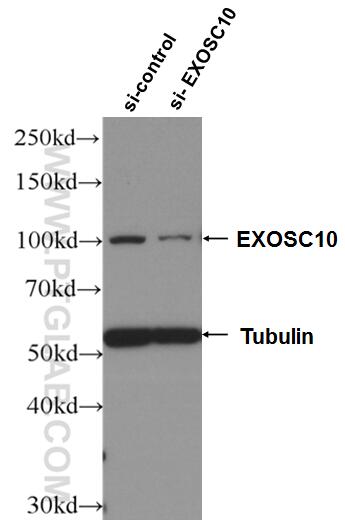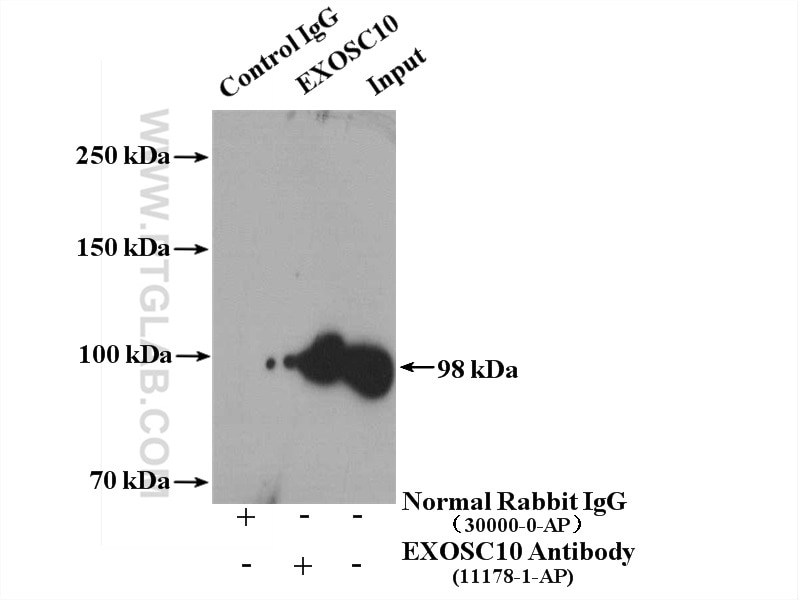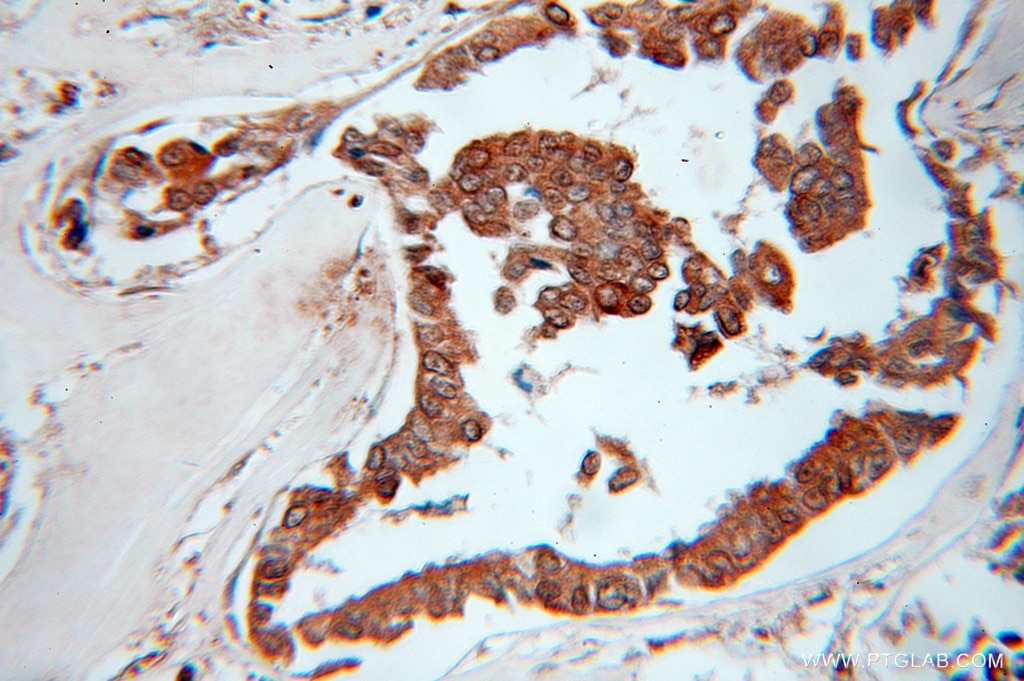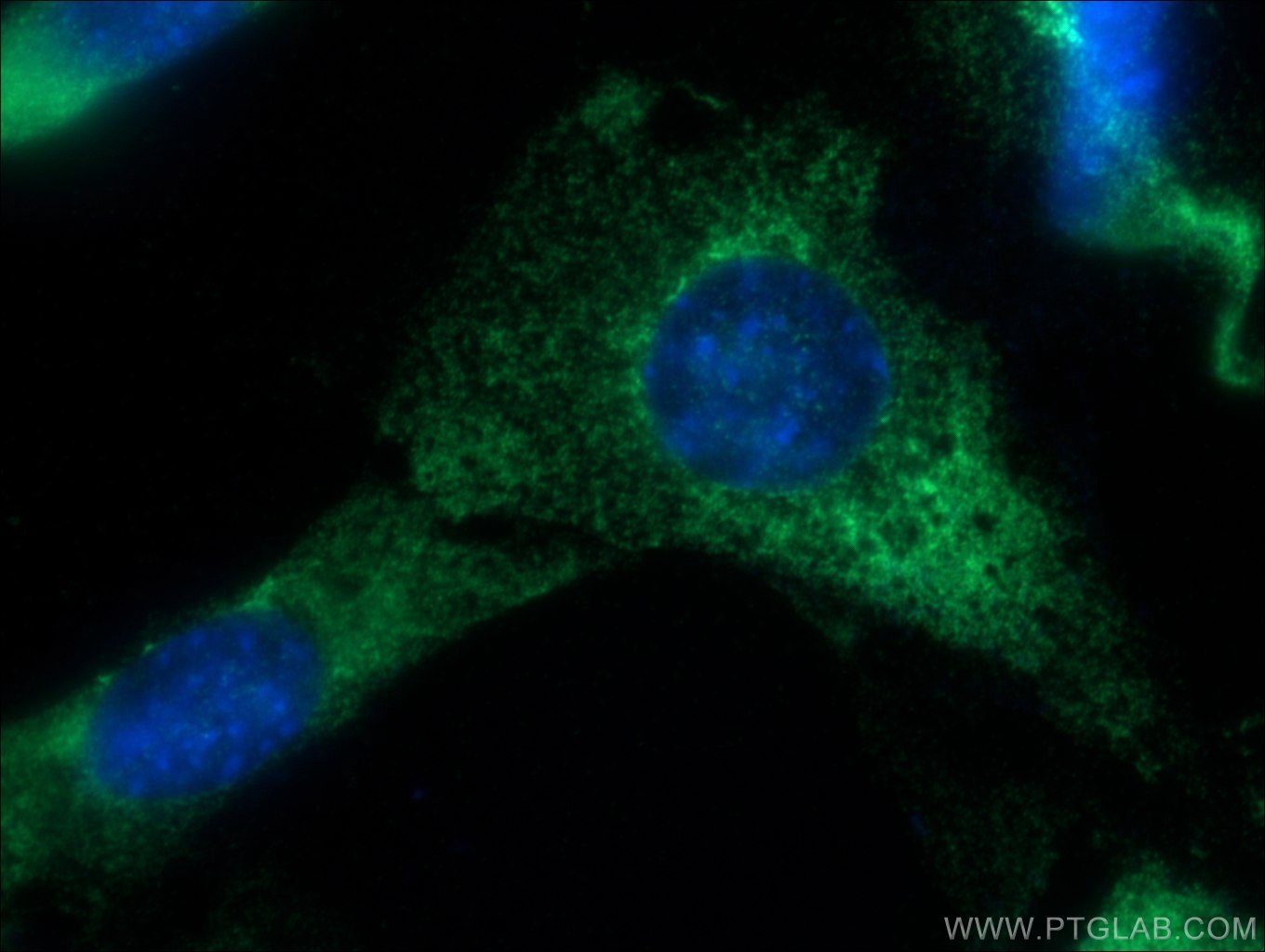Validation Data Gallery
Tested Applications
| Positive WB detected in | HeLa cells |
| Positive IP detected in | MCF-7 cells |
| Positive IHC detected in | human breast cancer tissue Note: suggested antigen retrieval with TE buffer pH 9.0; (*) Alternatively, antigen retrieval may be performed with citrate buffer pH 6.0 |
| Positive IF/ICC detected in | NIH/3T3 cells |
Recommended dilution
| Application | Dilution |
|---|---|
| Western Blot (WB) | WB : 1:500-1:2000 |
| Immunoprecipitation (IP) | IP : 0.5-4.0 ug for 1.0-3.0 mg of total protein lysate |
| Immunohistochemistry (IHC) | IHC : 1:20-1:200 |
| Immunofluorescence (IF)/ICC | IF/ICC : 1:20-1:200 |
| It is recommended that this reagent should be titrated in each testing system to obtain optimal results. | |
| Sample-dependent, Check data in validation data gallery. | |
Published Applications
| KD/KO | See 2 publications below |
| WB | See 6 publications below |
| IF | See 1 publications below |
| IP | See 1 publications below |
| CoIP | See 1 publications below |
| RIP | See 1 publications below |
Product Information
11178-1-AP targets EXOSC10 in WB, IHC, IF/ICC, IP, CoIP, RIP, ELISA applications and shows reactivity with human, mouse samples.
| Tested Reactivity | human, mouse |
| Cited Reactivity | human, mouse |
| Host / Isotype | Rabbit / IgG |
| Class | Polyclonal |
| Type | Antibody |
| Immunogen |
CatNo: Ag1666 Product name: Recombinant human EXOSC10 protein Source: e coli.-derived, PGEX-4T Tag: GST Domain: 586-885 aa of BC039901 Sequence: VAAGVKKSGPLPSAERLENVLFGPHDCSHAPPDGYPIIPTSGSVPVQKQASLFPDEKEDNLLGTTCLIATAVITLFNEPSAEDSKKGPLTVAQKKAQNIMESFENPFRMFLPSLGHRAPVSQAAKFDPSTKIYEISNRWKLAQVQVQKDSKEAVKKKAAEQTAAREQAKEACKAAAEQAISVRQQVVLENAAKKRERATSDPRTTEQKQEKKRLKISKKPKDPEPPEKEFTPYDYSQSDFKAFAGNSKSKVSSQFDPNKQTPSGKKCIAAKKIKQSVGNKSMSFPTGKSDRGFRYNWPQR 相同性解析による交差性が予測される生物種 |
| Full Name | exosome component 10 |
| Calculated molecular weight | 98 kDa |
| Observed molecular weight | 100 kDa |
| GenBank accession number | BC039901 |
| Gene Symbol | EXOSC10 |
| Gene ID (NCBI) | 5394 |
| RRID | AB_2293792 |
| Conjugate | Unconjugated |
| Form | |
| Form | Liquid |
| Purification Method | Antigen affinity purification |
| UNIPROT ID | Q01780 |
| Storage Buffer | PBS with 0.02% sodium azide and 50% glycerol{{ptg:BufferTemp}}7.3 |
| Storage Conditions | Store at -20°C. Stable for one year after shipment. Aliquoting is unnecessary for -20oC storage. |
Background Information
About 50% of patients with polymyositis/scleroderma (PM-Scl) overlap syndrome are reported to have autoantibodies to a neuclear
ucleolar particle termed PM-Scl. Exosome component 10 (EXOSC10), also named autoantigen PM/Scl 2, is the 100 kDa antigen component of PM-Scl and is recognized by most sera of PM-Scl paitents. EXOSC10 is strongly enriched in the nucleolus and a small amount has been found in cytoplasm supporting the existence of a nucleolar RNA exosome complex form. As a putative catalytic component of the RNA exosome complex which has 3'->5' exoribonuclease activity, EXOSC10 participates in a multitude of cellular RNA processing and degradation events.
Protocols
| Product Specific Protocols | |
|---|---|
| IF protocol for EXOSC10 antibody 11178-1-AP | Download protocol |
| IHC protocol for EXOSC10 antibody 11178-1-AP | Download protocol |
| IP protocol for EXOSC10 antibody 11178-1-AP | Download protocol |
| WB protocol for EXOSC10 antibody 11178-1-AP | Download protocol |
| Standard Protocols | |
|---|---|
| Click here to view our Standard Protocols |
Publications
| Species | Application | Title |
|---|---|---|
Nat Commun TASOR epigenetic repressor cooperates with a CNOT1 RNA degradation pathway to repress HIV. | ||
Development Post-transcription regulation by the exosome complex is required for cell survival and forebrain development by repressing P53 signaling.
| ||
Cell Rep Alterations of ceramide synthesis induce PD-L1 internalization and signaling to regulate tumor metastasis and immunotherapy response | ||
Cell Rep Cytoplasmic DIS3 is an exosome-independent endoribonuclease with catalytic activity toward circular RNAs |




